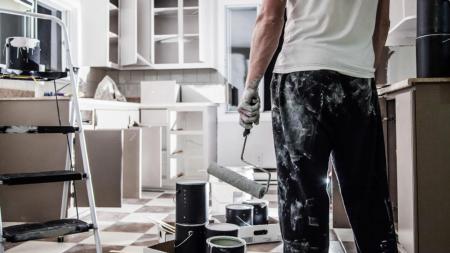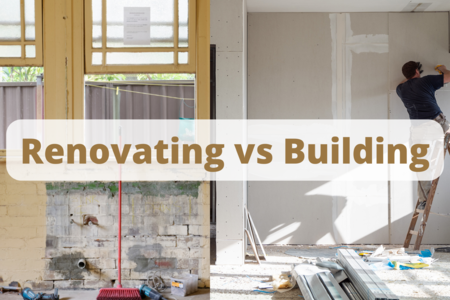
Guide To Renovating Your Kitchen
Are you planning to renovate your kitchen but aren’t sure where to begin? We’ve got you covered with this essential guide to transforming the kitchen. Read along to learn!
Read Full StoryAre you ready to install a pergola on your property?
Installing a pergola can be an excellent way to enhance your garden while providing a comfortable, relaxing spot.
Pergolas may be witnessing a resurgence in popularity among modern designers and homeowners, but they have been around for quite some time. Since then, the first pergolas were built in ancient Egypt for many purposes, such as creating hanging gardens or harvesting certain vegetation types.
While they are becoming popular once again for modern homes, installing a pergola can be challenging, especially if you do it yourself. Selecting the correct type of material is the trickiest part of the process. We created this comprehensive guide providing all the information you need about the process.
We’ve focused on the different materials suitable for a pergola, including their advantages and disadvantages.
So, let’s get into it!
A pergola is a kind of architecture or garden feature used to enhance your garden while serving as a functional space for relaxation. Pergolas have lasted for centuries and are now witnessing a rise in popularity again.
The pergola structure is generally open, having vertical pillars or posts that hold up a lattice roof, forming a shaded sitting area or passageway. It may be part of a building or a separate structure and can effectively section the outdoor living space, such as your garden.
The resurgence in popularity of pergolas is due to their excellent combination of functionality and pleasing aesthetics that also works well with modern sentiments.
One of the most significant advantages of pergolas is that you do not need to disrupt the landscape or transform it extensively. A pergola provides sufficient decoration and a comfortable resting spot without much hassle.
Pergolas are very similar to other external structures, like trellises and arbours, so many people often get confused. However, subtle differences make each design distinct from the others.
All three structures, while serving similar purposes, have their unique designs. For instance, arbours are much smaller than a pergola and are generally used at entrances or pathways for gardens and yards. Additionally, they are more suited for supporting plant growth due to the lattice siding, especially for plants with vine-like growth.
On the other hand, the trellis includes all structures specifically meant to aid climbers’ growth. It may either be built outside of external walls or constructed as a part of a pergola or arbour.
Understanding the differences between these structures is vital for installing the correct type of structure best suited for your outdoor structure.
For pergolas, the structure and design depend on the materials used in the construction process. Furthermore, it can affect the pergola’s durability, lifespan, and aesthetics.
A wide range of pergola materials for constructing a pergola allows designers to choose from traditional and modern approaches. Let us look at some of the most commonly used pergola materials.
Wood has traditionally been the most popular material for building pergolas and remains popular today. One main reason why wood is also a great option today is that it can provide a contemporary look or a classic rustic appearance, depending on your choice.
Additionally, it is highly customisable and easily accessible. But once you decide on constructing a wooden pergola, you must determine what type of wood to use, hardwood or softwood. Softwood construction can be more cost-effective, while hardwood offers a sturdier structure.
Popular softwood options include cedar and redwood, while teak, oak, and mahogany are great hardwood options. However, when using wood, remember that wooden pergolas generally have a shorter lifespan, and timber requires a higher level of maintenance.

PVC is a type of plastic used to manufacture siding, decks, and fences. However, it can be an excellent alternative for wooden constructions like pergolas. A PVC pergola looks clean and modern while also requiring very little maintenance.
Unlike wood, PVC is unaffected by the weather and is impervious to decay and insect damage. You can also purchase PVC or Vinyl pergolas in pre-built kits. On the flip side, however, vinyl is challenging to customise, and you cannot paint it easily. As a result, design-wise, it offers limited choices.

Fibreglass is increasingly becoming a pergola material of choice for constructing pergolas. Besides being a low-maintenance material, it is incredibly sturdy. Additionally, it is cheaper than vinyl and is an excellent option for pergola designs that require more space.
Fibreglass also provides a modern and clean aesthetic, offering more customisation than vinyl since you can paint it. These pergolas are available in kits, making installation more straightforward, even though customisation options are still limited compared to wood.

Pergolas in modern homes can be built using different materials. However, not all materials are suitable for all types of locations, and which material is most appropriate depends on the particular requirements of the case.
Besides determining the appearance and durability of the pergola, the material used in the construction also plays an integral part in determining the project’s cost. You can easily select between wood, vinyl, and fibreglass, considering your requirements for the best results. If you are struggling, we suggest contacting a licensed carpenter.
If you need assistance in Sydney, please reach out to us. At Final Touch, we have an experienced team of Sydney builders who can assist you with constructing your new pergola. So, don’t wait; call us today!
A well-built pergola using suitable material significantly enhances the look of your garden or yard without requiring you to undertake any sizeable land-transforming project. With that, it’s a wrap. See you soon!
Are you planning to renovate your kitchen but aren’t sure where to begin? We’ve got you covered with this essential guide to transforming the kitchen. Read along to learn!
Read Full StoryAre you planning to build a granny flat on your property? Check out our guide on the top six things you need to consider before you begin.
Read Full StoryReady to upscale or modernise your existing home, but not sure whether to renovate or build? Let us help you in our guide with the most important things to consider!
Read Full Story

